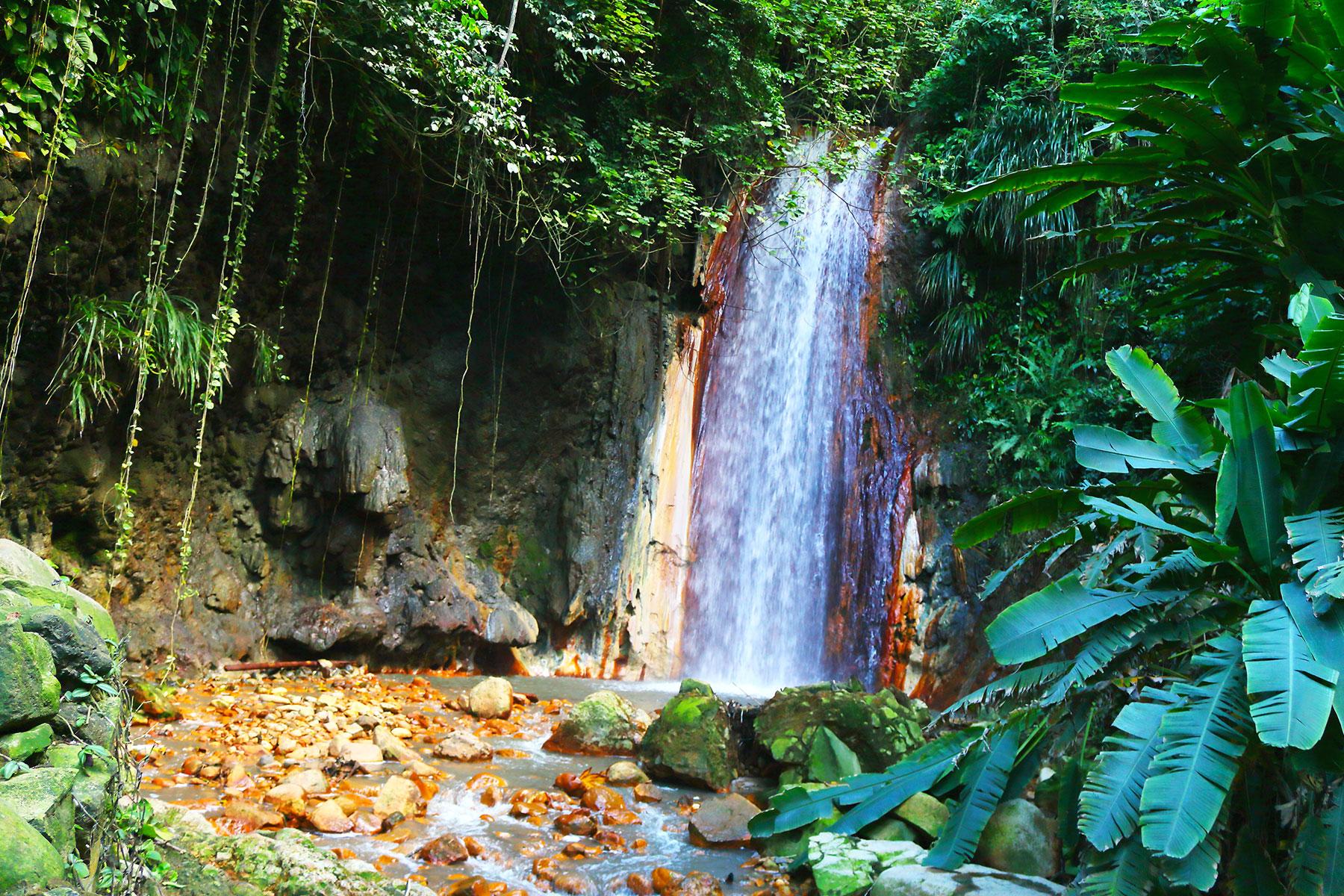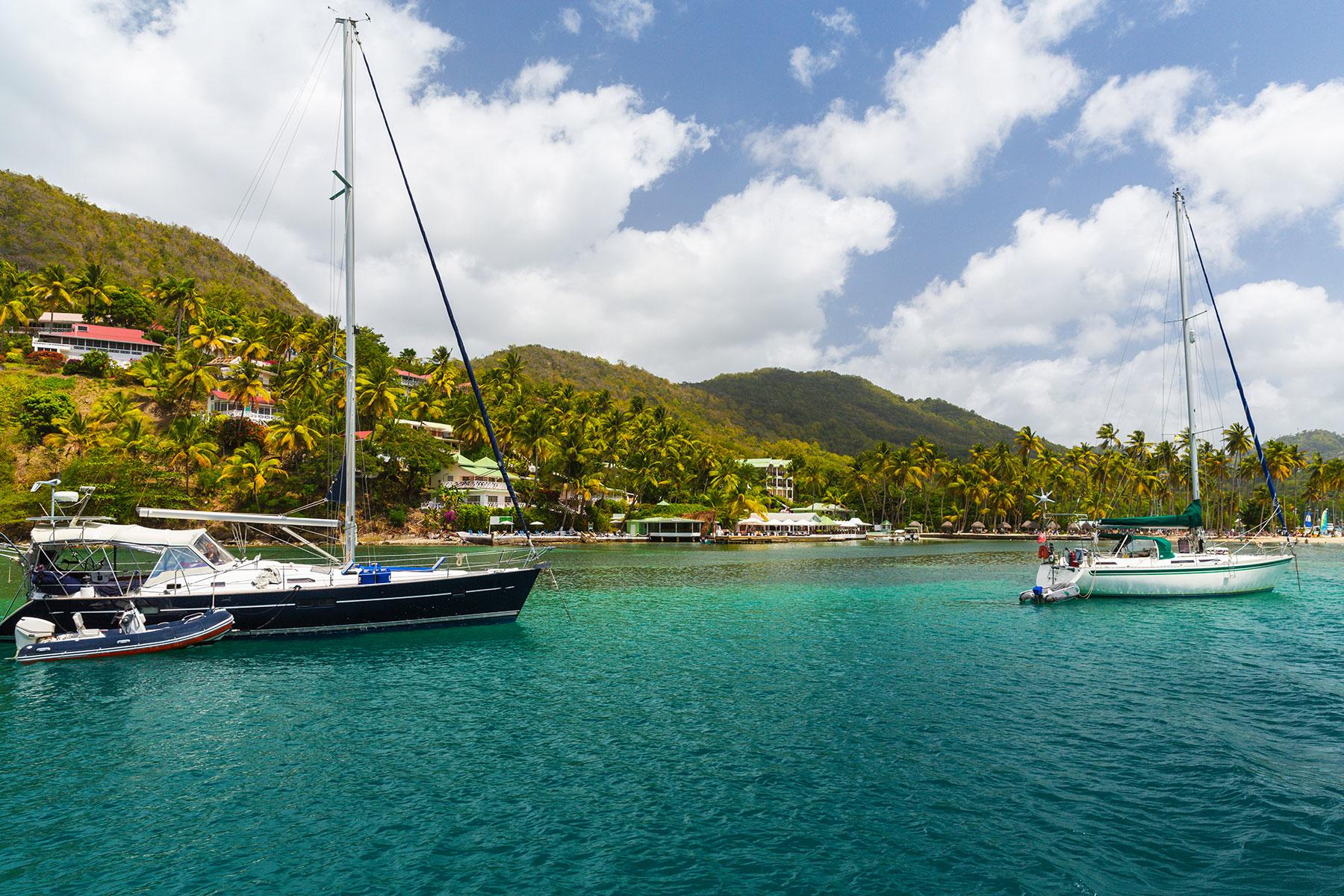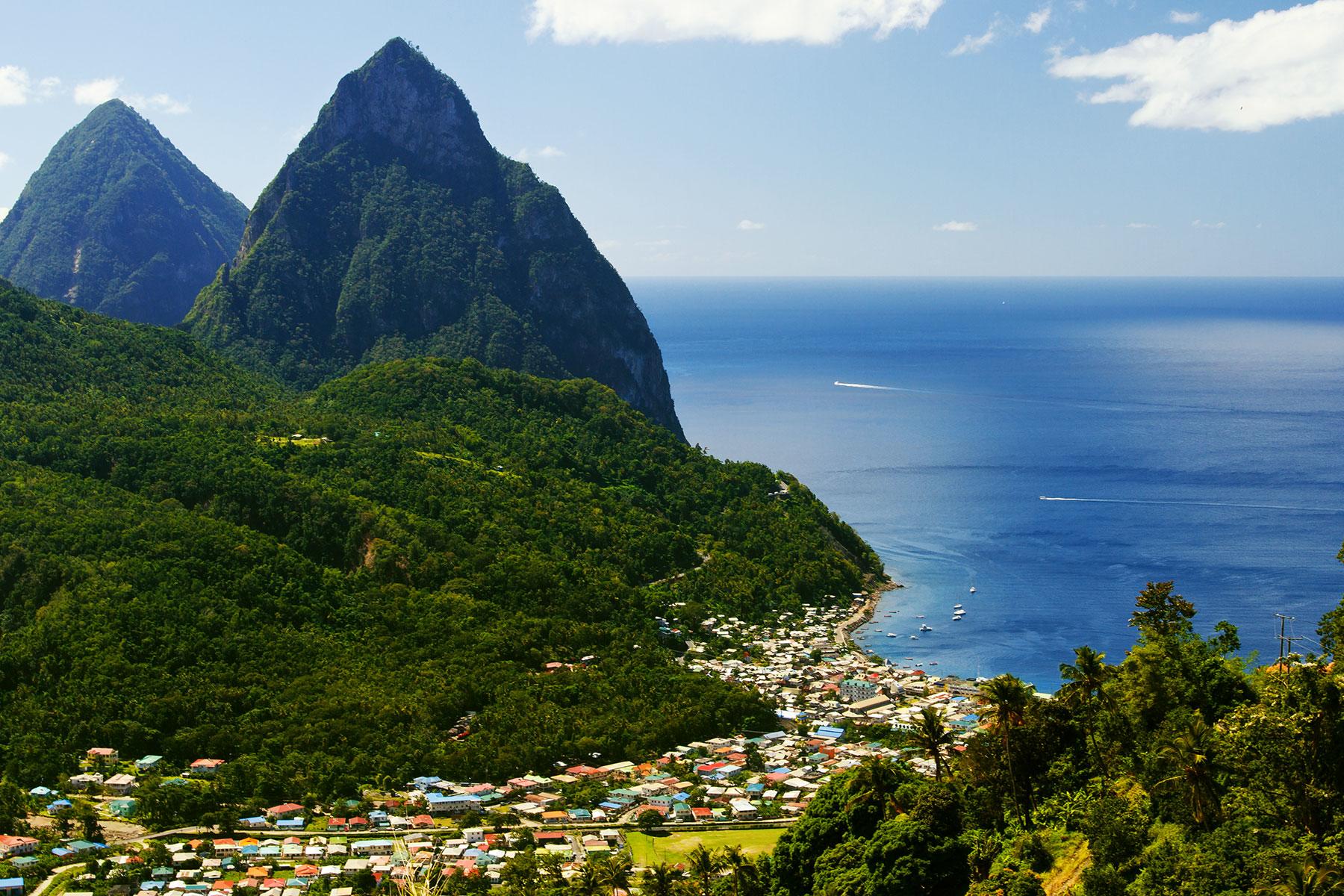Hello ladies and gents this is the viking telling you that today we are talking about

 A mile or so inland from Soufrière Harbor and a stone’s throw from the main road through Fond St. Jacques, Toraille Waterfall cascades over a cliff and down about 50 feet to a pool where you can take a refreshing plunge or let the falling water massage your back and shoulders. A nature trail leads through the surrounding lush tropical gardens. Changing rooms are nearby.
A mile or so inland from Soufrière Harbor and a stone’s throw from the main road through Fond St. Jacques, Toraille Waterfall cascades over a cliff and down about 50 feet to a pool where you can take a refreshing plunge or let the falling water massage your back and shoulders. A nature trail leads through the surrounding lush tropical gardens. Changing rooms are nearby.
 The most enjoyable way to get from the north to St. Lucia’s fascinating natural attractions in Soufrière is by sea. Catamaran excursions depart from Rodney Bay Marina and Capella Marina in Marigot Bay for the magnificent sail south to Soufrière Bay. The sailing excursion includes visits to the drive-in volcano, botanical garden, and lunch at a historic plantation. The Pitons are always in view. There’s a snorkeling stop on the return sail and a quick pass through Marigot Bay. It’s a “don’t-miss” experience.
The most enjoyable way to get from the north to St. Lucia’s fascinating natural attractions in Soufrière is by sea. Catamaran excursions depart from Rodney Bay Marina and Capella Marina in Marigot Bay for the magnificent sail south to Soufrière Bay. The sailing excursion includes visits to the drive-in volcano, botanical garden, and lunch at a historic plantation. The Pitons are always in view. There’s a snorkeling stop on the return sail and a quick pass through Marigot Bay. It’s a “don’t-miss” experience.
 The Pitons, a World Heritage Site, are the iconic symbols of St. Lucia. The view from the top of Gros Piton (2,619 feet) is breathtaking, and getting there is half the fun. More of a hike than a “climb,” yet still strenuous, it takes about two hours on average to reach the summit. You’ll need permission from the Forestry Department and a guide, who will lead you safely along the trail while explaining some local history, geology, and botany.
The Pitons, a World Heritage Site, are the iconic symbols of St. Lucia. The view from the top of Gros Piton (2,619 feet) is breathtaking, and getting there is half the fun. More of a hike than a “climb,” yet still strenuous, it takes about two hours on average to reach the summit. You’ll need permission from the Forestry Department and a guide, who will lead you safely along the trail while explaining some local history, geology, and botany.
ST LUCIA

Saint Lucia is a sovereign island country in the West Indies in the eastern Caribbean Sea on the boundary with the Atlantic Ocean. The island was previously called Iyonola, the name given to the island by the native Amerindians and later, Hewanorra, the name given by the native Caribs. Part of the Lesser Antilles, it is located north/northeast of the island of Saint Vincent, northwest of Barbados and south of Martinique. It covers a land area of 617 km2 (238 square miles) and reported a population of 165,595 in the 2010 census. Its capital is Castries.
Take a Dip Under a Waterfall
 A mile or so inland from Soufrière Harbor and a stone’s throw from the main road through Fond St. Jacques, Toraille Waterfall cascades over a cliff and down about 50 feet to a pool where you can take a refreshing plunge or let the falling water massage your back and shoulders. A nature trail leads through the surrounding lush tropical gardens. Changing rooms are nearby.
A mile or so inland from Soufrière Harbor and a stone’s throw from the main road through Fond St. Jacques, Toraille Waterfall cascades over a cliff and down about 50 feet to a pool where you can take a refreshing plunge or let the falling water massage your back and shoulders. A nature trail leads through the surrounding lush tropical gardens. Changing rooms are nearby.
Sail Along the Coast
 The most enjoyable way to get from the north to St. Lucia’s fascinating natural attractions in Soufrière is by sea. Catamaran excursions depart from Rodney Bay Marina and Capella Marina in Marigot Bay for the magnificent sail south to Soufrière Bay. The sailing excursion includes visits to the drive-in volcano, botanical garden, and lunch at a historic plantation. The Pitons are always in view. There’s a snorkeling stop on the return sail and a quick pass through Marigot Bay. It’s a “don’t-miss” experience.
The most enjoyable way to get from the north to St. Lucia’s fascinating natural attractions in Soufrière is by sea. Catamaran excursions depart from Rodney Bay Marina and Capella Marina in Marigot Bay for the magnificent sail south to Soufrière Bay. The sailing excursion includes visits to the drive-in volcano, botanical garden, and lunch at a historic plantation. The Pitons are always in view. There’s a snorkeling stop on the return sail and a quick pass through Marigot Bay. It’s a “don’t-miss” experience.
Climb a Piton
 The Pitons, a World Heritage Site, are the iconic symbols of St. Lucia. The view from the top of Gros Piton (2,619 feet) is breathtaking, and getting there is half the fun. More of a hike than a “climb,” yet still strenuous, it takes about two hours on average to reach the summit. You’ll need permission from the Forestry Department and a guide, who will lead you safely along the trail while explaining some local history, geology, and botany.
The Pitons, a World Heritage Site, are the iconic symbols of St. Lucia. The view from the top of Gros Piton (2,619 feet) is breathtaking, and getting there is half the fun. More of a hike than a “climb,” yet still strenuous, it takes about two hours on average to reach the summit. You’ll need permission from the Forestry Department and a guide, who will lead you safely along the trail while explaining some local history, geology, and botany.
And as always have a chilled day from the viking.
Comments
Post a Comment